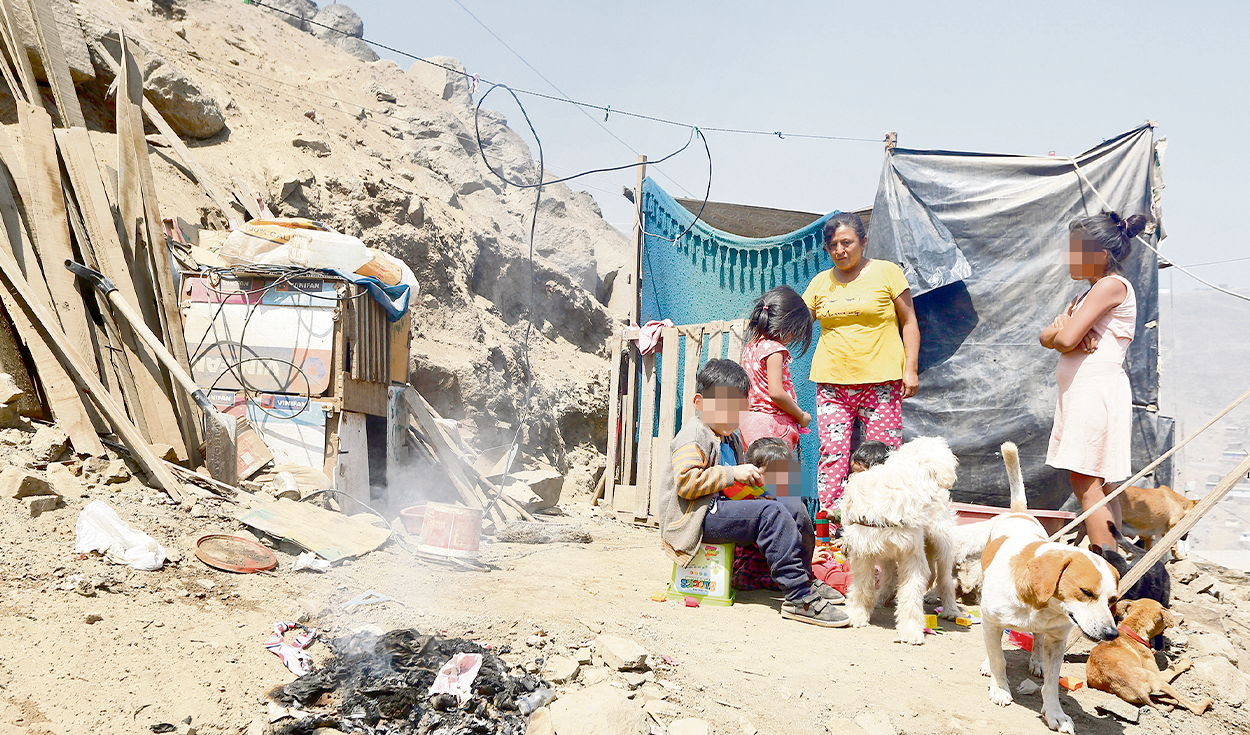
Hunger worsened in Metropolitan Lima, reflecting the growth of urban poverty during 2023, according to the INEI.
The calorie deficit, which measures the insufficiency of calories acquired in a home to satisfy basic nutritional requirements, reached 43.5% of the capital’s population, and was just over 6 percentage points away from the national rate (36%). , rural (33%) and the rest urban (32%).
“Four out of every 10 Lima residents go hungry. It is a more serious situation than the one we saw previously.“, commented Javier Herrera, IRD researcher, during the presentation of the poverty data held yesterday — which was delayed a week after the PCM’s attempted censorship, recognized by the head of the INEI, Peter Abad.
Herrera maintains that, since 2016, food intake has been reducing in capital families as they are not able to meet their minimum needs. For example, the demand for milk contracted 2.2%; vegetables, 4.7% and eggs, 3.2%. “The degradation continues. It doesn’t fill the stomach. Now homes have fewer nutrients to survive,” she noted.
This scenario puts the development of the country in check – adds Herrera – since, given the advance of the anemia and malnutrition The future of children and their cognitive development is mortgaged.
Here, Jessica Huamán, dean of the College of Nutritionists of Lima, warns that chronic malnutrition rose from 7.1% to 8.1% in children under 5 years of age in urban areas; while, childhood anemia went from 39% to 40.2% in children between 6 and 35 months in that area.
Huamán recalled that, in general terms, food insecurity threatens, with greater emphasis, 1.9 million Peruvians mired in extreme poverty (5.7% of the population).
Do bonuses help?
PUCP professor and researcher Norma Correa assures that the situation of the poorest households will not improve with the delivery of an isolated bonus, since “sustained social protection support” is required.
Furthermore, he considers that it is not an economically sustainable or effective strategy in terms of results, beyond appearing “politically attractive”; So, recommends that the State abandon short-term welfare responses and better focus its efforts on strengthening programs that have been giving good results.. “A bonus or two bonuses don’t change anyone’s life. The most vulnerable people are required to receive sustained care,” she said.
Correa emphasizes that the sustained reduction in poverty rates goes hand in hand with economic growth and a pleasant investment climate, since they translate into job creation and greater fiscal space for social investment programs.
More factors against nutrition
Huamán stressed that 73.7% of Peruvians do not have safely managed drinking water, and 45.7% use polluting solid fuels for cooking—in most cases, firewood.
This reflects the precarious situation of the most needy and how their nutritional and health status is put at risk, since the lack of water could influence the development of diarrheal diseases acute illnesses and eventual malnutrition of the infant.
In addition, 14.8% of the extreme poor live in overcrowded conditions and only 33.5% have access to drainage.
Source: Larepublica
Alia is a professional author and journalist, working at 247 news agency. She writes on various topics from economy news to general interest pieces, providing readers with relevant and informative content. With years of experience, she brings a unique perspective and in-depth analysis to her work.











